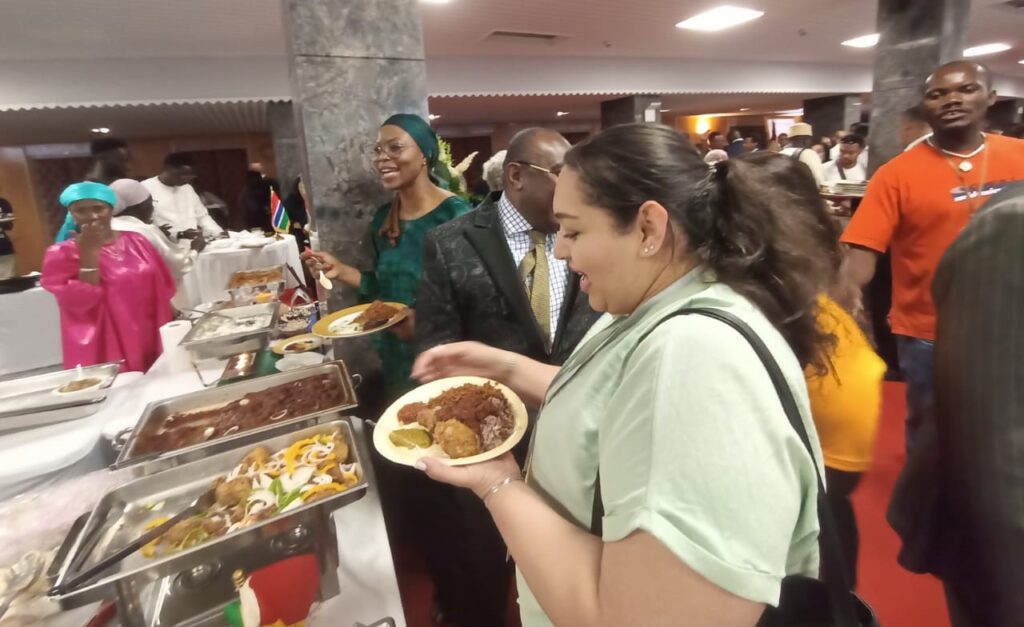AU Day: Ghana ‘Jollof’ and ‘Waakye’ receive high patronage in Morocco
 It was an interesting sight to behold at the King Mohammed V Theatre in Rabat, Morocco, as many queued to taste Ghana’s local dishes and beverages served as part of the commemoration of the “Africa Day” in Rabat, Morocco.
It was an interesting sight to behold at the King Mohammed V Theatre in Rabat, Morocco, as many queued to taste Ghana’s local dishes and beverages served as part of the commemoration of the “Africa Day” in Rabat, Morocco.
Ghana’s ‘Waakye’ and ‘Jollo’, served with indigenous pepper sauce and spicy beverage known as ‘Sobolo’ attracted many participants at the exhibition coordinated by Ghana’s Embassy in Morocco.
The swift manner in, which some patrons completed their first course and opted for another turn was indicative that their tongues had had a memorable encounter with a good meal.
“This is very good. I’ll taste it again. We also prepare jollof in our country but this is more spicy,” Philip, a participant from Cameroon, said.
Fasouma, a Nigerien student in Morocco, told the Ghana News Agency that: “I have heard about Ghana’s jollof so I wanted to have a taste of it. This is really good and I wish your people can teach me how to prepare it.”
Nasiru, a Nigerian journalist, revived the Ghana-Nigeria jollof debate, but admitted in the end that “Ghana’s jollof is almost as good as that of Nigeria”.
Earlier, some Ghanaian students in Morocco performed Ghanaian cultural dances at a ceremony that preceded the food exhibition.
The Kingdom of Morocco on Thursday held series of events to mark the establishment of the Organisation of African Unity (OAU), now African Union (AU) in 1963.
In an interview with the GNA, Mr Samuel Jojo Effah-Broni, Ghana’s Ambassador to Morocco, said the country’s rich local meals demonstrated its unique culture and identity.
He said many Moroccans and other foreign nationals were in love with Ghana’s local dishes and beverages.
“Everybody enjoys the taste of Ghanaian food. Ours is unique . Other countries prepare waakye and jollof, but they are not smooth like ours,” Mr Effah-Broni said.
He said the country must package and market its local dishes well to drive cultural export and to reap benefits for the country in the area of tourism.
Source: GNA
